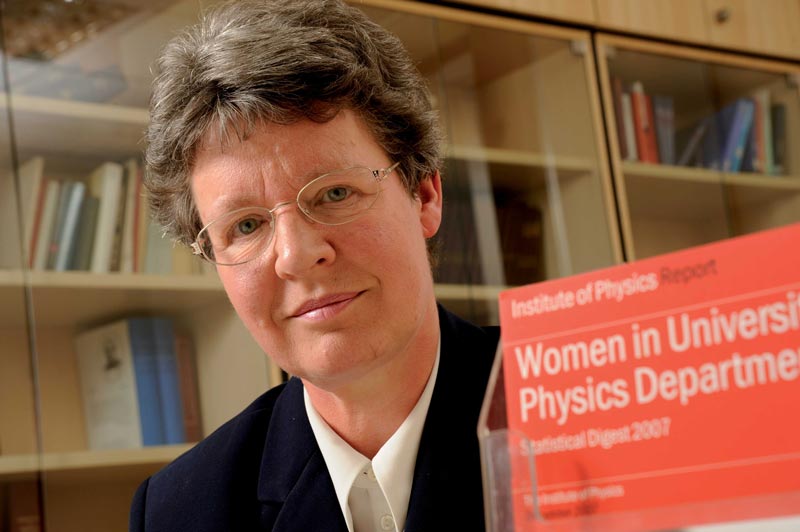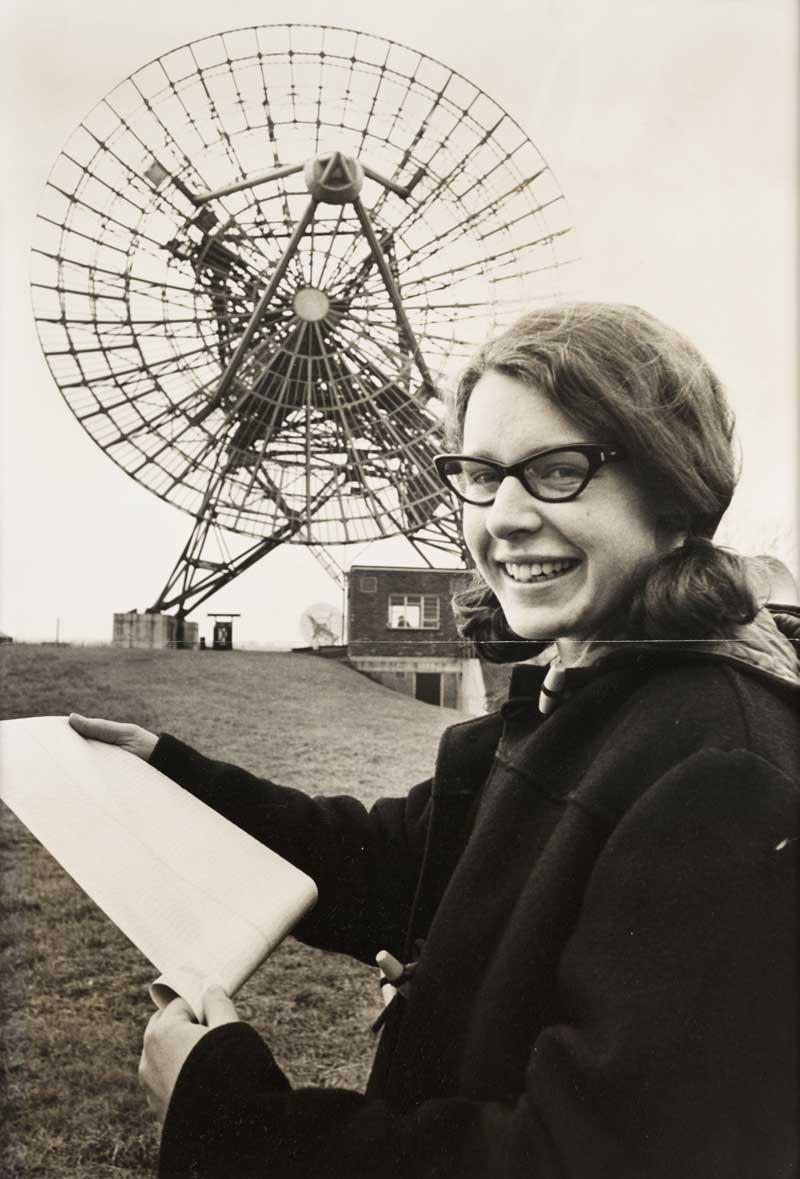by Rachel Kaufman

Dame Jocelyn Bell Burnell is a bit angry.
Recollecting a grade-school incident during a 2013 TEDx talk, she says that one day, an announcement was sent out that girls were to go to one room, boys to another. “And I thought it was sport,” she said.
“It wasn’t. The girls got sent to the domestic science room, and the boys to the science lab. No asking, just telling. That’s where you went.”
Her parents, and a few others, were outraged, and Bell Burnell was moved to the science class with two other girls. "The teacher made us three girls sit right under his nose.
"I came top in the science exam at the end of that term."
That young woman would go on to discover the first pulsars; the British press, upon discovering that the scientific sensation of the day was an attractive grad student, descended on Cambridge. "They had their preconceptions," Bell Burnell told SPS. Instead of asking about her work, they asked for her waist size.
Now, almost half a century later, Bell Burnell is a world away from the woman who would "forget" her measurements when talking to the press.
She has dedicated her life to research, teaching, and ensuring that the sciences are a welcoming place for all. “Women should not have to do all of the adapting,” she wrote in a 2004 editorial for Science. In her 2013 TEDx talk, she elaborated: “Those of us who've been early in a field have often had to… play the male game. And I hate to think what a lifetime of doing that has actually done to me.”
Dr. Bell Burnell was born Susan Jocelyn Bell in 1943 in Northern Ireland.
She excelled at science. After finishing her physics degree at the University of Glasgow, she went to Cambridge to complete her Ph.D.
During her first two years there, Bell helped build the telescope she would use for her thesis. Under the supervision of Antony Hewish, she and a half-dozen others strung miles of cables over four and a half acres.

"Once the equipment was built, I ran it solo," she said. The machine was built long before ubiquitous computing, so it produced paper charts—96 feet each day. She would roll the charts out on the floor and analyze the patterns, inch by inch, for signs of scintillating ("twinkling") quasars.
A few weeks into the telescope's operation, she discovered a quarter-inch of what she called "scruff" on the chart. It resembled a star, but no star could produce a signal quite like this one -- or so it was thought.
After "enlarging" the signal, Bell saw a series of regularly spaced pulses. Hewish was convinced the signal was interference. "It was nonsense," he said in the BBC documentary Beautiful Minds.
But once Bell and Hewish confirmed the pulse in another telescope, they knew they were on to something big.
Bell Burnell soon found a second, third and fourth similar signal elsewhere in the sky. Each was a pulsar, for “pulsating star.” Each is a rapidly rotating neutron star that emits a beam of radiation—much like a lighthouse’s rotating lamp.
Finding the second pulsar "was a huge relief," Dr. Bell Burnell told SPS. "The first one was actually quite worrying, because it was such an outrageous signal that you really were very puzzled as to what was going on. Finding the second one then begins to make clear that it's more natural and normal than you have been fearing."
Bell and Hewish published their findings in Nature. Hewish—not his graduate student—would be awarded the 1974 Nobel Prize "for his decisive role in the discovery of pulsars."
Dr. Bell Burnell would by then be married and spent much of her career following her husband from place to place.
It was only after her marriage had broken up and her son had gone to college that she "was able to go off to jobs because of what they were rather than where they were."
She chose to teach at Open University, a school for non-traditional students. Her appointment to the chair of physics position, she said in her 2013 TED Talk, doubled the number of female professors of physics in the country.
Now retired from active teaching and research, Bell Burnell was elected in 2014 president of the Royal Society of Edinburgh, Scotland’s national academy of arts and letters—the first woman to hold such an honor. It “is a great privilege, but also hard work,” Bell Burnell told SPS.
“The position of women in science, technology, etc., in the UK has improved markedly in my lifetime,” she said. “Indeed, the whole of society in the UK is much more female-conscious, in the sense it is no longer male dominated, and if someone produces a list of prize winners and there's no women amongst them, people comment!”
But, she said in 2013, “I think the culture of science needs to change as well.”
“Science, technology, engineering, maths are incredibly important to help build a smart economy. We need all the talent there is. We need all the bright ideas there are as well, and we cannot afford to be turning aside from a fair chunk of the population.”
Also See:
"Resolved: Noted Scientist Shares Her Journey," The SPS Observer, Winter 2012